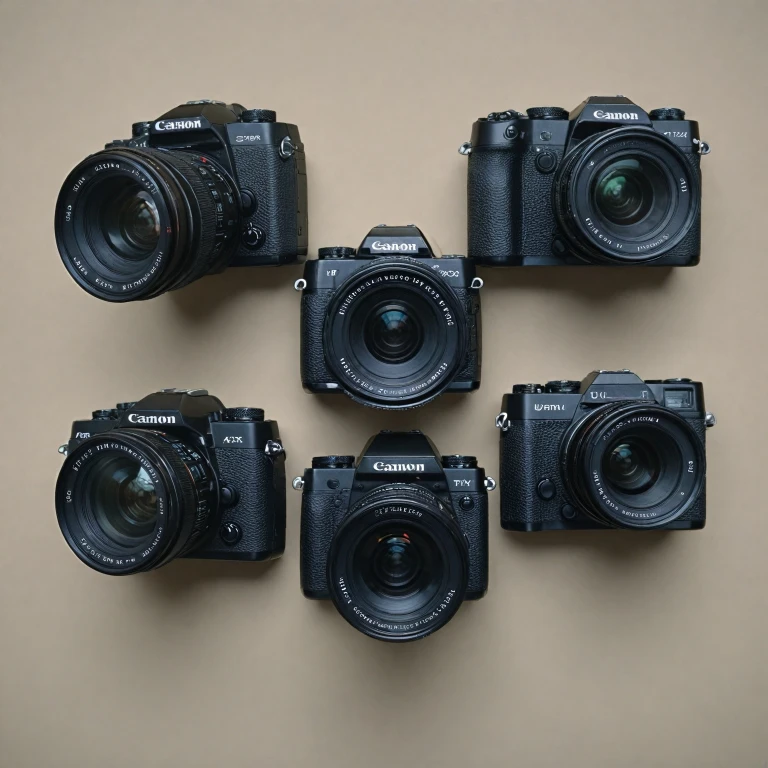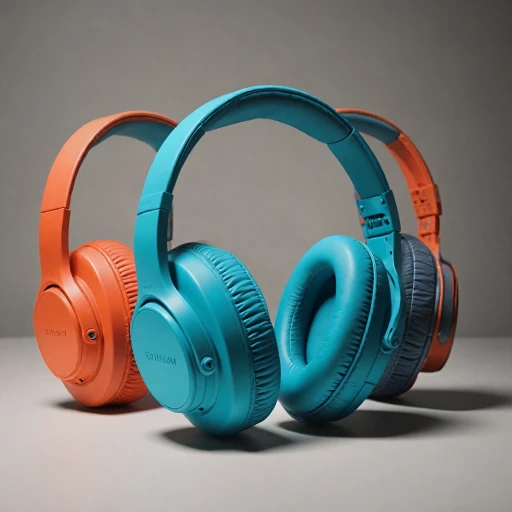What is a Stereo 3-Camera System?
Getting to Grips with Stereo 3-Camera Systems
Stereo 3-camera systems stand at the forefront of modern imaging technology. Essentially, these systems integrate three individual cameras to simulate binocular vision, much like a stereo radio or stereo dash speaker setup. This configuration allows for the capture of depth and dimensionality in a way that a traditional camera setup cannot.
The technology behind stereo 3-camera systems involves synchronized inputs, akin to how a video switcher manages multiple video sources. In essence, the three cameras work in unison to provide a comprehensive, multi-dimensional view. The system synthesizes input from all three cameras, functioning similarly to a media receiver with audio components that merge various sounds into one coherent output.
This type of camera setup is not just another tech fad; rather, it's a sophisticated tool with wide-ranging applications—from enhancing navigation in new car models featuring car stereo systems to elevating photography quality. For those accustomed to traditional setups, understanding stereo 3-camera capabilities is a step toward unlocking new potential in visual media.
Moreover, these setups can often be seamlessly integrated with additional technology, such as android auto and apple carplay. Much like how kenwood and boss audio systems improve audio quality in vehicles, stereo 3-camera systems refine the visual experience. In a world where digital interface and connectivity are paramount, features such as wireless capabilities and touch screen interfaces are rapidly becoming standards not just in cars, but also in photography.
For more elaborate insights on how these systems measure up against other imaging technologies, and to explore the full spectrum of their benefits, it's beneficial to delve into an exploration of pixel monitoring technologies. These explorations underscore the prominence and evolving nature of stereo 3-camera systems in both professional and consumer markets.
The Advantages of Using a Stereo 3-Camera System
Maximizing Depth and Accuracy with Stereo 3-Camera Systems
Stereo 3-Camera Systems have revolutionized the way we capture images, offering several advantages over traditional single-lens cameras. These systems not only improve depth perception but also enhance the precision of spatial data, making them invaluable for a variety of uses. Firstly, the inclusion of three cameras allows for stereo vision, which greatly enhances depth perception. This feature is crucial in instances where understanding the spatial relationship between objects is necessary, such as in automotive applications involving car backup cameras and carplay or android auto systems. Integrating a stereo system with a vehicle’s receiver, whether it's a kenwood or boss audio stereo dash setup, can improve safety and navigation. Secondly, these multi-camera setups provide greater detail and clarity in image capture. With advances in technology, such as wireless input and bluetooth compatibility, the images captured can be seamlessly transmitted to devices, enhancing the user's experience with apple or android systems. This is particularly beneficial for recording videos where high-definition output is required, like in a touch screen car stereo radio or a video switcher. The stereo 3-camera system also excels in low-light conditions, crucial for rear cameras and dash cams in vehicles. This capability ensures that nothing goes unnoticed, even in challenging lighting scenarios. For those in photography, this feature opens up new possibilities in capturing night-time or dimly lit scenes with more clarity and detail. Moreover, advice from various professional reviews highlights the system’s ability to integrate with media receivers like carplay android setups, ensuring a user-friendly experience paired with free shipping offers making these advanced systems more accessible. Given the wide range of applications, the stereo 3-camera system seamlessly fits with double din auto setups and enhances the audio-visual experience for users worldwide. For further insights into the technical aspects and detailed applications, you might want to explore the world of pixel monitoring cameras for how these advancements influence modern photography and videography.Applications in Modern Photography
Modern Uses of Stereo 3-Camera Systems
The possibilities unlocked by a Stereo 3-Camera System in modern photography are vast. This technology captures multi-dimensional images, which is especially beneficial in dynamic environments like cityscapes or car scenes, providing detailed depth that a traditional camera might miss. Such systems are increasingly used in combination with carplay android systems, providing enhanced visual data for driver assistance technologies. The stereo configuration can be integrated with in-car media receivers that support apple carplay and android auto, offering seamless interaction.
Moreover, pairing stereo cameras with backup and rear cameras is gaining traction, particularly in the auto industry. These setups often include wireless apple and bluetooth connections to stereo radios or dashboards, ensuring an intuitive and efficient user experience. Dashcams, equipped with a stereo dash camera system, are another application—providing a comprehensive view that enhances road safety and accident documentation.
Photography-wise, the benefits are not limited to vehicles. Wildlife enthusiasts and sports photographers leverage video switchers with stereo cameras for capturing action from multiple angles. Additionally, bloggers and influencers using touch screen cameras frequently incorporate these systems for better depth perception in their photo and video content, making their work stand out.
Technical Challenges and Solutions
Tackling the Technical Hurdles
Navigating the technical challenges associated with stereo 3-camera systems can be a complex task. Much like the auto industry embracing car stereo integration with modern tech like Apple CarPlay and Android Auto, achieving an optimal stereo camera setup requires careful consideration. Manufacturers must address issues such as synchronization, calibration, and processing speed to ensure seamless performance. One significant hurdle is ensuring that each individual camera in the stereo system is perfectly aligned and synchronized. This alignment is crucial, particularly in applications where precise depth mapping or high-definition video capture is required. This is similar to the necessity of precise audio calibration in a double din car stereo for optimal sound quality. Processing the data captured by stereo cameras in real time can also present a challenge. The need for powerful processors and efficient algorithms is akin to the demands placed on a media receiver with built-in touch screen interfaces. The goal here is to process the data without lag, similar to how a fast responding touch screen enhances user experience in a car stereo with Bluetooth connectivity. Wireless communication between camera units and processing systems is another area where innovative solutions are required. Drawing parallels to wireless Apple CarPlay and Android Auto features, ensuring a robust wireless connection can be vital in maintaining continuous data flow without interruptions. The integration of various technological advancements in stereo dash and rear camera configurations in cars also reflects the nuances of managing technical challenges in stereo 3-camera systems. From video switcher inputs in a backup camera setup to stereo radio inputs, seamless integration of these elements is critical for holistic system functionality. In conclusion, overcoming the technical challenges of stereo 3-camera systems involves a multifaceted approach, drawing inspiration from other tech domains such as car audio systems and wireless connectivity. As seen in products with free shipping and positive reviews from brands like Boss Audio and Kenwood, addressing these challenges can significantly enhance the end user's experience.Comparing Stereo 3-Camera Systems with Other Technologies
Evaluating Stereo 3-Camera Systems Against Competing Technologies
As digital imaging technology advances, the stereo 3-camera system holds its ground by offering unique benefits as discussed previously. However, comparing these systems with other technologies can provide valuable insights for photographers and tech enthusiasts. Below are key considerations when evaluating stereo 3-camera systems against other imaging solutions:
- Versatility Across Devices: Stereo 3-camera systems are known for their versatility across various devices, from enhancing car stereo systems to integrating with android auto and apple carplay platforms. They function seamlessly with a range of media receivers, supporting features like bluetooth pairing and wireless apple car connectivity. Comparatively, traditional single lens cameras may lack such broad adaptability.
- 3D Depth Perception: The major advantage of stereo 3-camera systems is their ability to capture 3D depth, a feature not typically available in standard cameras or dash cams. This characteristic is particularly beneficial for applications requiring precise depth measurements, such as in vehicles for backup camera systems and dash cam inputs in car stereo setups.
- Integration with Advanced Automotive Systems: Recently, stereo 3-camera technology has gained traction in enhancing both apple carplay and android auto interfaces, providing a clearer and more defined rear camera feed directly into car stereo displays. This contrasts with older car stereo systems that often relied on single or dual-lens input, limiting depth accuracy and detail.
- Media Reception Quality: Systems linking with media receivers such as kenwood and boss audio offer stereo radio enhancements, leveraging the stereo 3-camera system to improve audio-visual reception. Networking capability with bluetooth and wireless technologies complement this feature, unlike some older stereo dash devices.
When exploring these dynamic systems, factors like image processing speed, video switcher capabilities, and free shipping availability often come up in consumer reviews. Moreover, many stereo 3-camera systems are now available with double din setups, integrating touch screen functionalities to provide an all-in-one media receiver experience.



